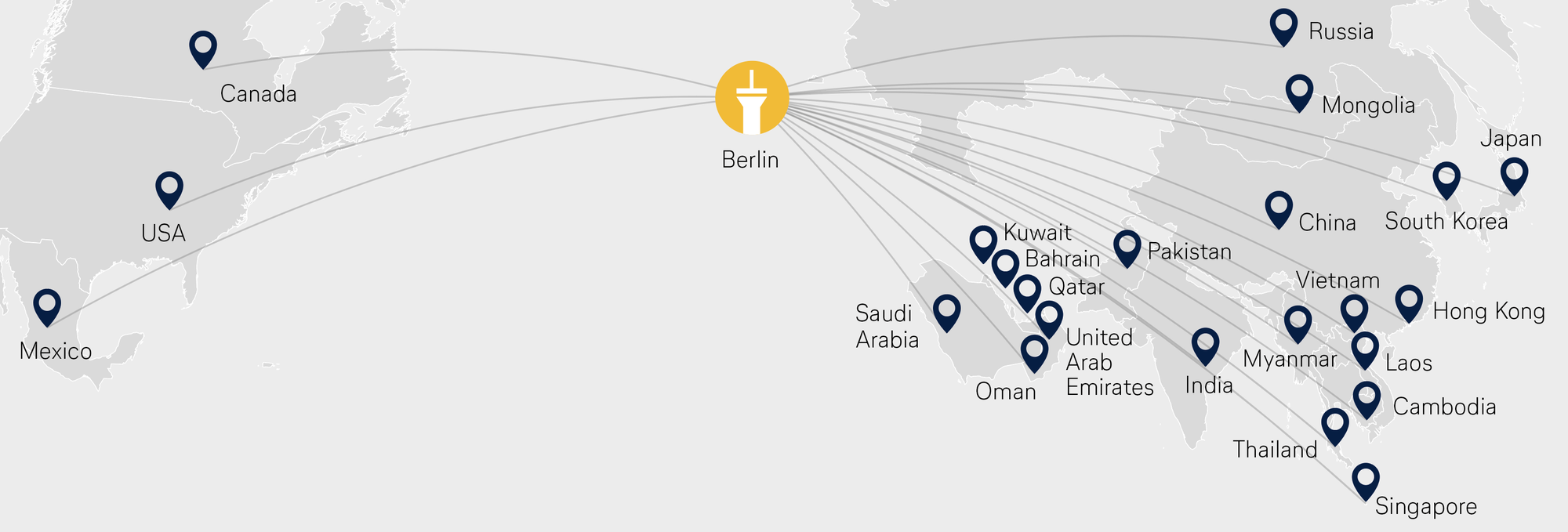Berlin
Arrivals possible from everywhere in the world
The date has been set: BER is to open on 31 October 2020. Hopes are high that it will work this time. Berlin needs a new, functioning airport and it is also important for the Lufthansa Group.
Airlines from all over the world can fly into Germany – and thus also Berlin. A selection:

Since 2010, the passenger numbers in Berlin have increased by 74% to about 35 million. The economy and the almost six million people in the capital region are happy about this. The Lufthansa Group is present. Six Group airlines – Lufthansa, Eurowings, SWISS, Austrian, and Brussels Airlines, as well as SunExpress – fly into Berlin and transport up to 33,000 passengers a day. Almost every fourth passenger flies with us.
Airlines from all over the world are welcome
At the moment, the city is on the flight plans of 70 airlines from 55 countries. Like any other airport in this country, Berlin already profits from Germany’s liberal aviation laws: every EU airline may pick up routes, even overseas. Airlines from North and South America, Africa, and Asia may therefore fly into Germany and thus also Berlin.
This is based on international aviation laws. States or regions like the EU define mutually how many airports may be targeted how often in the respective country. The airlines are free to choose the specific destinations. This regulation also applies to the regions around the gulf and China: this means that airlines from the UAE may fly into four German airports. At the moment, Emirates and Etihad prefer other cities – Frankfurt, Munich, Hamburg, and Düsseldorf – but might give these up at any time in favour of Berlin. Germany and China currently have agreed to 55 frequencies per week.
Of these, only about four flights on average are used for the capital. Contrary to some theses, there are hardly any traffic limitations for Berlin. Existing limits are due to the fact that the competitive conditions (e.g. environment, social, and consumer protection standards) partly deviate widely from each other. One can freely fly to Berlin.
Closely timed to the hubs
The long-distance business continues to be dominated by bundling passengers at hubs. Lufthansa organizes its long-distance fleets via Frankfurt and Munich. This way, Berlin is connected via our hubs to which 60 airplanes of the Lufthansa Group take off every day. This way, travellers can reach 120 destinations with only one transfer. No other airline offers comparable variety. We want to maintain this level at the new airport.
Hub connections ensure high capacity utilization of airplanes on intercontinental routes. This is good for the airlines and good for the climate, since the average fuel consumption per passenger is low. In contrast to European connections, direct long-distance flights often have a comparatively worse ecological footprint, because away from the hubs, flights are rarely adequately filled.
Airlines from all over the world can fly into Germany – and thus also Berlin. A selection:
